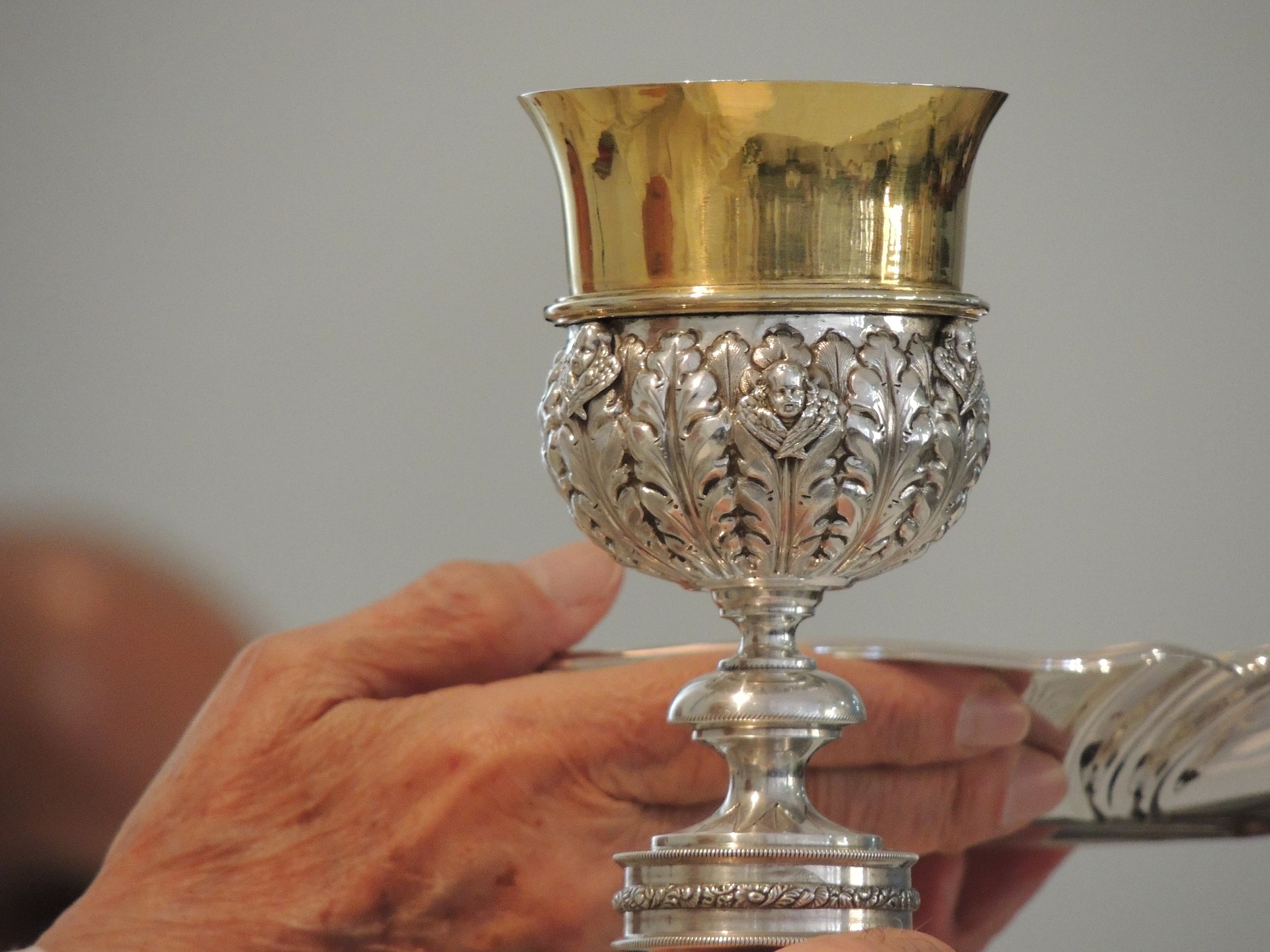Answered by Legionary of Christ Father Edward McNamara, professor of liturgy and dean of theology at the Regina Apostolorum university.
Q: In an emergency, can a ciborium be used as a chalice? I understand that the chalice is used for the Precious Blood and the ciborium for consecrated hosts, but given their similar design (excepting that the ciborium has a lid), could one be used for the purpose of the other in the event that a chalice or ciborium be broken or damaged, affecting its use? — M.P., Emporia, Kansas
A This is the kind of question in which common sense rather than liturgical norms come into play — basically because liturgical law does not attempt to foresee every eventuality.
We are clearly not before a grave emergency such as a clandestine Mass for persecuted Catholics in a prison camp in which all liturgical norms cannot be applied. We are rather in a kind of last-minute emergency when somebody damages the chalice before Mass and it cannot be replaced in a reasonable time.
In such cases, I would say that it is permissible to use a chalice-like ciborium in lieu of the chalice proper. Both vessels would probably have been properly blessed to contain the sacred species, and so the ciborium could legitimately be used to contain the Precious Blood.
Indeed it is even possible to confuse them. Not so long ago I celebrated Mass in a South American country. While purifying the “chalice” I noticed a small rise or bump at the bottom of the cup that caused me some doubt. The inside curvature of a chalice’s cup is usually smooth whereas ciboria often have a small rise or bump at the bottom that apparently makes it easier to distribute communion by impeding that the hosts lie perfectly flat. Whatever the cause, I mentioned my doubt to the priest in charge, and a quick exchange of the lid on the “ciborium” in the tabernacle quickly revealed that my intuition was correct and that somebody had inadvertently switched the two sacred vessels.
Since common sense is the general rule, it means that there is no general principle in play. It is obvious that a low ciborium, or one from which it would be difficult to drink without spillage, should not be used even in an emergency.
The rules for making chalices used to be relatively strict, even though various forms were allowed. For example, it was required that the base be wider and heavier than the cup and that the chalice stem’s central knob be manageable, hence not be overly ornate.
Excessive height was to be avoided so as not to impede making the signs of the cross over the chalice, and the border of the cup that is touched by the priest’s lip had to be smooth. Most of these norms take into account the rubrics of the extraordinary form in which the priest makes many signs of the cross over the chalice, and above all is required to keep thumb and index finger together from the consecration until the purification including while holding the chalice.
The fact that this gesture no longer exists in the ordinary form, as well as the introduction of concelebration, has led to many innovations in chalice design with generally larger cups, smaller bases and sometimes no chalice stem as such because the priest can easily hold it up with both hands-free.
The common preference for administrating Communion using hosts consecrated in the same Mass, rather than from the tabernacle, has led to wider use of smaller tabernacles and this has also led to a reduction in the size of the ciborium which in many cases no longer bears any resemblance to a chalice.
The above are examples of how some aspects of the liturgy, in this case, the design of chalices and ciboria, are not permanently fixed but practically adapt to conform to current liturgical practice and law.
Only rarely do they transgress the law. For example, in some Roman stores, one still sees for sale fragile ceramic chalices or chalices with a pouring spout even though pouring the Sacred Species is explicitly forbidden in liturgical law.
* * *
Readers may send questions to zenit.liturgy@gmail.com. Please put the word “Liturgy” in the subject field. The text should include your initials, your city, and your state, province or country. Father McNamara can only answer a small selection of the great number of questions that arrive.



